TEL AVIV — It’s a well-established routine.
Every day, Zeev Engelmayer takes a seat at his bay window overlooking his backyard in central Tel Aviv. His mission? Fighting despair with an army of colorful markers in a bid to bring hope to the people of Israel.
For the past 18 months since the Hamas terror attacks on Oct. 7, 2023, he has drawn a daily postcard, many featuring Israeli hostages. Some have been turned into banners, T-shirts and profile pictures on social media and have been embraced by the families of those taken captive. One even made its way to Pope Francis.
Although the subject matter is often dark, the postcards are for the most part colorful and innocent. “I use a child’s style because a child has the ability to have hope even in times that are very difficult,” he told NBC News in February.
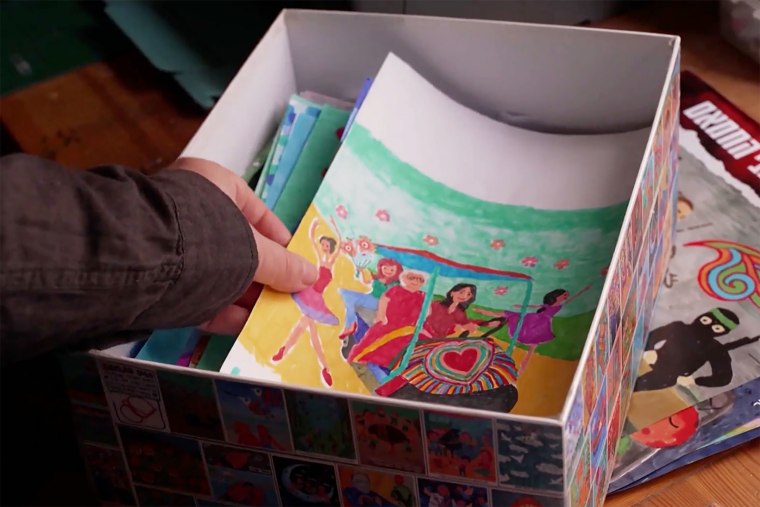
In the first two weeks after the Hamas attacks, Engelmayer said he drew in black and white to reflect the deep sadness he felt about the attacks on Israel, which saw 1,200 people killed and around 250 taken hostage, according to Israeli authorities. He said his first piece paid homage to “Guernica,” the 1937 anti-war masterpiece by renowned Spanish artist Pablo Picasso.
But then one morning he said he picked up colored pens and began to draw.
Titled “Something Terrible Is About to Happen,” the picture he produced that day depicted Kibbutz Be’eri, a small community in southern Israel where dozens of civilians and security personnel were killed on the morning of the Hamas attack and more than 30 residents were also taken hostage.
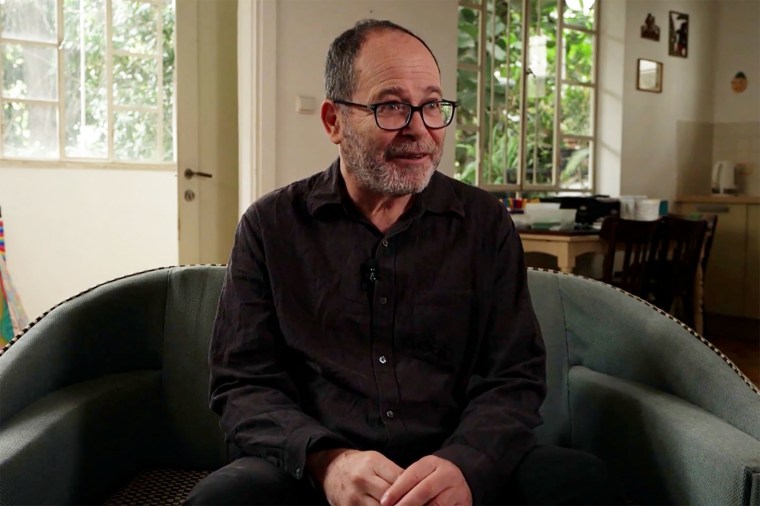
“I wanted to show the difference between what was before, this peaceful place, and the green trees and the flowers,” Engelmayer said. “I wanted to show the moments before it happened.”
The first postcard he drew of a hostage, he added, was of grandmother Yaffa Adar, now 86, who was filmed as she was taken away in a golf cart from her home in nearby Kibbutz Nir Oz while surrounded by armed militants.
“She had a little smile,” said Engelmayer, adding that she held her head up high so as not to give her captors “the satisfaction of taking her hostage.”
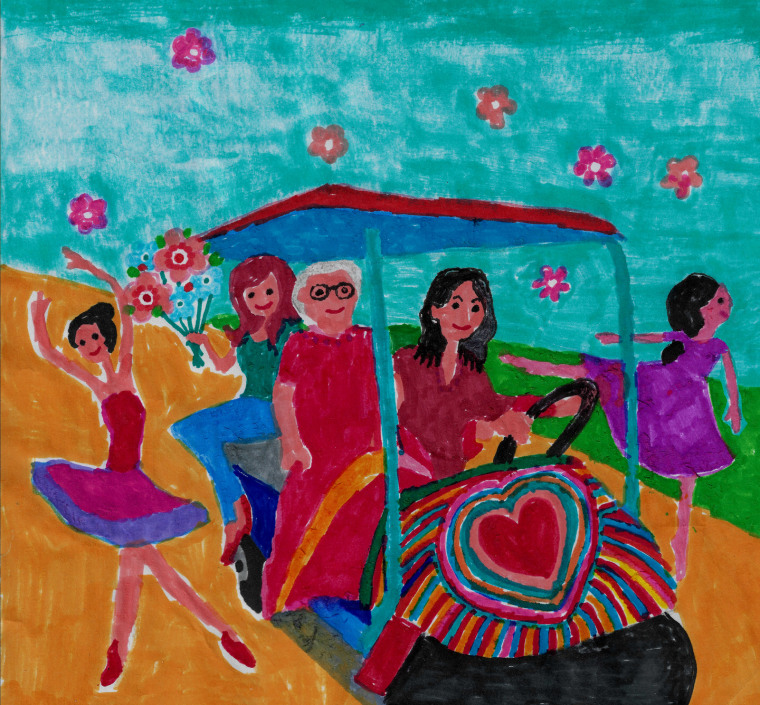
Instead of drawing her capture, he said he imagined her happy return home. “I drew her surrounded by a woman with colorful dresses, spreading flowers in the air,” he said of Adar, who was freed four days later, on Nov. 24, 2023, after 49 days in captivity.
Engelmayer said after that he was approached by relatives of many hostages asking him to depict their loved ones. They told him all about their hobbies and passions, as well as personal anecdotes, in the hope of inspiring him.
One also made it to Pope Francis via an Italian diplomat, Engelmayer said, adding that the pontiff then “prayed for the hostages.”
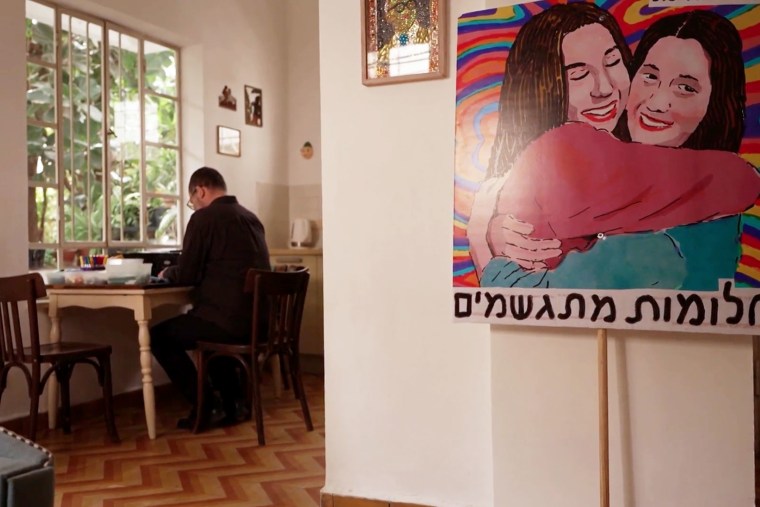
Throughout, Engelmayer said he was determined to highlight the plight of those in Hamas captivity, although many have since been freed in exchange for Palestinian prisoners as part of a ceasefire deal earlier this year and during a previous pause in fighting in November 2023.
After Phase 1 of what was to be a three-stage ceasefire deal, Israel last month stepped up attacks in Gaza, where it has killed more than 50,500 people since the Oct. 7 attacks, according to health officials in the Hamas-run enclave.
Some days, Engelmayer said he struggled to “find the optimism.” In September 2024, when American Israeli Hersh Goldberg-Polin’s body was found shot execution style, alongside five other hostages, he said he “drew a very pessimistic, difficult painting.”
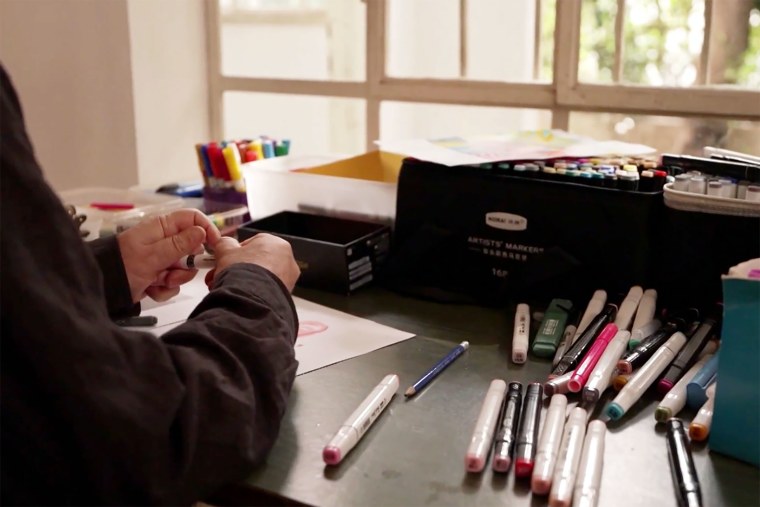
A picture of Kfir Bibas, who was just 9 months old when he was kidnapped with his brother Ariel, 4, and their mother, Shiri, 34. The postcard depicted the ginger-haired baby celebrating his first birthday alongside his captors, with a cake, balloons and decorations. It “looks as though it’s a happy drawing, but it’s a very sad drawing,” he said. “It’s the saddest happy birthday I made,” Engelmayer added.
The remains of the Bibas boys and their mom were later returned from Gaza by Hamas. Their father, Yarden Bibas, 34, was released by Hamas on Feb. 1. He had no idea about their fate until he was freed.
Other postcards have proved more positive, the dreams of reunions having come true. When Emily Damari, 26, was released, she held up her left hand, two of her middle fingers missing after she was shot when taken hostage from Kibbutz Kfar Aza in southern Israel.
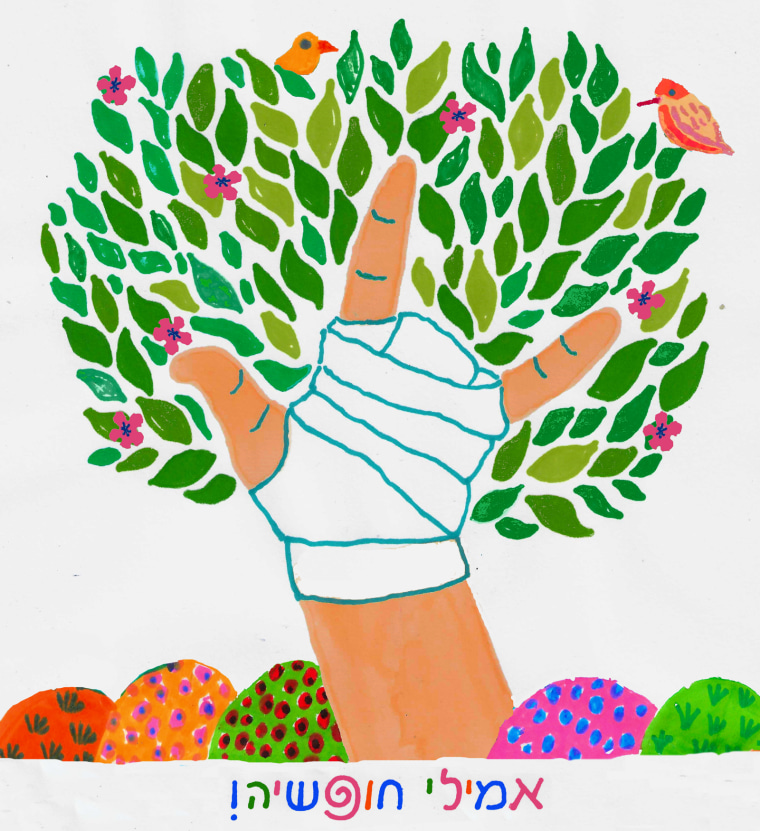
Inspired by her defiant gesture, Engelmayer said he drew her hand “like a tree, with leaves around and flowers.” His message? That “we can grow from this and heal from this.”
Some of the hostages he’s depicted have reached out to thank him for his work, including Rimon Kirsht-Buchshtab, who used his drawing of her on her social media profiles.
Fifty-nine hostages remain in Gaza, of which just around two dozen are believed to still be alive, including Israeli American Edan Alexander, and Engelmayer said he would not stop drawing the postcards until all had been returned.
“This is the most important project I ever did,” he said. “It’s my mission.”
